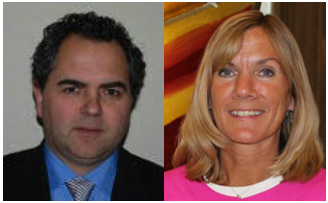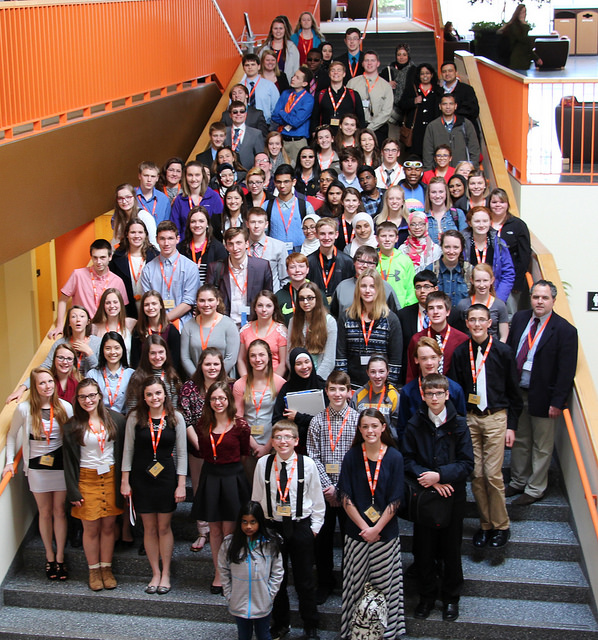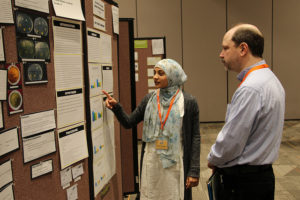For more than 50 years, the Ohio Junior Science and Humanities Symposium has provided a competitive forum for the state’s budding young scientists to present the results of their research, with the chance to advance to national and international contests. The 54th edition of the Ohio symposium will be held March 15-17, 2017, at Bowling Green State University. To learn more about the event, and organizers’ efforts to recruit more minorities and girls to participate, we contacted the symposium’s regional director, Emilio Duran, associate professor in the university’s School of Teaching and Learning and the Department of Biological Sciences, and Susan Marie Stearns, assistant director of programming and development, Northwest Ohio Center for Excellence in STEM Education, a symposium sponsor. The two collaborated on their answers to our questions:
Q: Give us some background on the Ohio Junior Science and Humanities Symposium.

A: The Ohio Junior Science and Humanities Symposium (OJSHS) is designed to challenge and engage future scientists and engineers (grades 9-12) in STEM research that advances scientific knowledge. At the OJSHS, students compete for scholarships and recognition by presenting the results of their original research before a panel of judges and an audience of their peers.
Junior Science and Humanities Symposia are held throughout the United States. In Ohio, the JSHS is sponsored by Bowling Green State University (BGSU) and the Northwest Ohio Center for Excellence in STEM Education (NWO), with continued support of the U.S. Army Research Office, U.S. Office of Naval Research and U.S. Air Force Office of Scientific Research.
Q: What kind of projects do the students submit?
A: Students complete original research on a variety of scientific topics and present their findings in a paper or poster presentation.
Q: What prizes go to the winners? Can they go on to a higher level of competition?
A: For the Ohio regional finalists:
- Five will receive expense-paid trips to the National JSHS, to be held April 26-30, 2017, in San Diego, Calif. The National brings together more than 400 participants in a program of educational and scientific exchange.
- The first-place and second-place Ohio regional finalists will be invited to present their original research at the National JSHS.
- A total of $4,500 in undergraduate tuition scholarships, awarded in $2,000, $1,500 and $1,000 increments, will be given to three regional symposium finalists.
For the national finalists:
- A $12,000 undergraduate tuition scholarship will be awarded to each of the six first-place finalists.
- An $8,000 undergraduate tuition scholarship will go to each of the six second-place finalists.
- A $4,000 undergraduate tuition scholarship will be given to each of the six third-place finalists.
Since its inception, the Ohio JSHS has sent 50 winners to present papers at the National Junior Science and Humanities Symposium. Thirteen of these subsequently presented at the London International Youth Science Forum, with the next set for July 26-August 9, 2017.
Q: You recently received a $50,000 grant from Battelle and the Army Educational Outreach Program to expand student participation in STEM enrichment activities, with an emphasis on underserved students. How will the grant money be used to reach out to this population and increase their participation in the symposium?

A: NWO is a partnership among area universities, area school districts and community agencies throughout the 29-county region of northwestern Ohio and is one of the seven designated STEM hubs of the Ohio STEM Learning Network.
NWO will reach out within our networks and constituencies to recruit underrepresented students and their teachers and will facilitate workshops to ensure their participation in OJSHS.
Specifically, we are targeting teachers in disadvantaged school districts who are teaching classes that involve a research component. We are trying to include, as part of their syllabi, an expectation for students to report their research findings at our symposium. We will provide funds to enhance their research, and we will guide teachers and students through the process of getting ready to present research posters at the symposium.
One of the most important parts of the scientific enterprise is to present research findings to appropriate audiences. However, this aspect is often overlooked. We hope to give these aspiring researchers the opportunity to celebrate their efforts by presenting at a research symposium with a rich history.
Q: Beyond the chance for prizes and advancement, how does participation in the symposium benefit students?
A: Over the years, we have seen how empowering this experience can be for budding scientists.

To quote a JSHS alumnus, “I learned a tremendous amount of science, got to meet other high school students who shared my interests in science, and learned that I could succeed at any program that I chose to pursue.”
According to the JSHS website, by participating in regional and national symposia, students may:
- Participate in a forum honoring individual achievement in STEM.
- Qualify for significant scholarships and other recognition.
- Network to enrich understanding of STEM pursuits beyond high school.
- Advance in statewide, regional, national and international symposia.
- Develop skills to help prepare for undergraduate and graduate pursuits —skills in the application of science content to solve a problem or to gain new knowledge, writing a paper, and communicating results.
Q: Where can teachers and students get more information about the symposium?
A: Our website, www.ojshs.org, has a wealth of information, including registration information and archives from past years’ competitions.